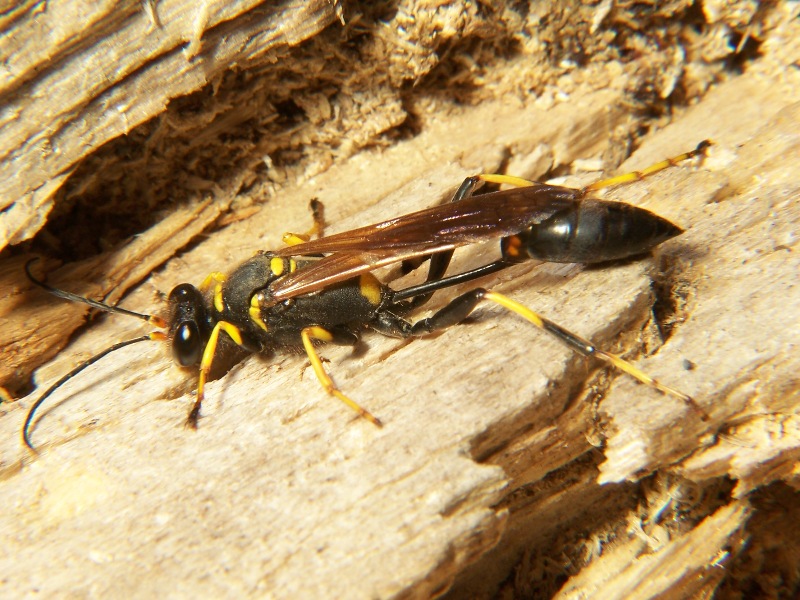It is always a curious thing to unexpectedly notice a phenomenon which you had never discerned previously, only to realise after contemplation that the occurrence you have just noted has always been present. Such was the case on a slightly drizzly afternoon I spent in my dormitory room, pondering on a possible topic on which I could write about in a blogging assignment for my entomology class.
Sitting before my computer screen, drumming my fingers on my table, I observed a fine black line trailing from a plate of consumed lunch on the tabletop, onto the wall, and out the window through a minuscule crack at the bottom of the panels. Upon closer observation the line appeared to be composed of numerous tiny ants moving in an extremely ordered fashion. Of course, I have seen ants marching along in neat trails more times than it matters to mention here; however, it registered to me that I had never investigated the mechanisms of pheromone excretion in ants that result in their orderly movements.
Upon some quick “research” (i.e. Google), I swiftly identified these ants that were hijacking the food in my room as Monomorium minimum. How did I find out so quickly? Well, serendipity played a part. Since these ants were little and black, I started off with searching “little black ant”, and was promptly rewarded. The common name of M. minimum is actually “little black ant” (simple and descriptive – that is how all insects should be named). Further confirmation was made after examining pictures and finding out that these ants were prevalent in the Houston area. Native to the US, the little black ants make such great nuisances due to its fond taste of fairly much everything humans eat (and some more humans don’t eat). Their small size allows them to more easily infiltrate food containers; because of this they are also versatile in the environment in which they can establish a nest in (from trees and grass and in the soil outdoors, to masonry and woodwork indoors). Fortunately, I traced the path of the ants in my room to a nest that was outside of my room (fingers crossed it remains that way).
Ant trails themselves are an intriguing piece of biological ingenuity, and one that we do not quite fully understand yet. There are many purposes the trails serve, but the most common is the locating of temporary food sources. From observations, researchers have seen that in most cases (including the M. minimum), a scout ant is initially dispatched to search for food. Naturally, the scout ant wanders in irregular paths. After randomly happening upon a food source, the scout ant will take the most direct route possible back to the nest, leaving a trail of pheromones behind. From this, we can see that the scout ant somehow maintains a knowledge of the location of itself with respect to its nest, as it is out meandering about. The scout then releases a different type of signal, a recruitment signal, which summons the worker ants.
Recent studies have shown that ant behaviour following the initial identification of food location by scout ants may be even more complicated than it seems. The complexity of the ants’ comprehension of its large environment
and their interactions with its components indicate a mechanism of “collective cognition” at work. That is, no single individual manages the movements of the ants; rather, a convoluted nexus of information is continuously passed around and gathered by all of the foraging worker ants. Individuals gather information through their unique interactions with various elements in the environment. A lattice of trails results from thousands of worker ants leaving trails. Their collective knowledge is constantly updated and adapts to changes in the environment. That’s why ants can find your food so soon after you remove it from the original location.
This extraordinarily effective strategy is termed stigmergy. Stigmergy is an indirect form of communication (in this case, among the ants), whereby an action is stimulated by a signal left in the environment by previous actions. In this way, a process can be phenomenally flexible and efficient. In ants, this strategy is used not only in ant trails, but also in nest building. This is a prime rationale of how such small insects can construct such intricate and large habitats.
It is truly interesting how elaborate chemical pathways may be in even the most minute of organisms. In another pheromone-mediated pathway involved in food foraging of M. minimum, a chemical is secreted to interfere with competitors. In the event that worker ants encounter other organisms at the food source the scout has discovered, the workers will secrete a toxin that may deter the competitors long enough for them to gather enough food.
Such is the beauty of taking the time to examine the little creatures around us that we may otherwise find insignificant. We chance on marvellous behaviours and uncover wondrous pathways the universe has created; we seek to appreciate the finer details in the wildlife that surrounds us. And through this, we begin to see our world in a whole new light.


